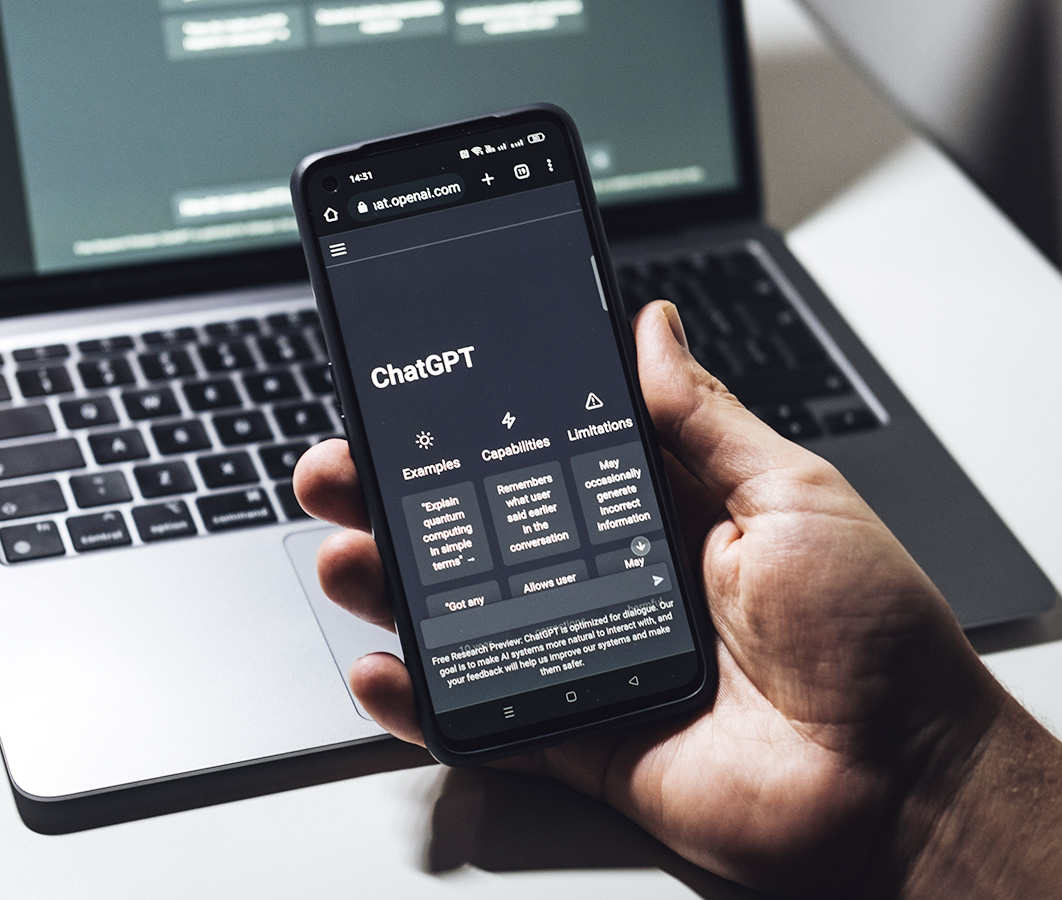 Screen with ChatGPT chat with AI or artificial intelligence. AdobeStock image
Screen with ChatGPT chat with AI or artificial intelligence. AdobeStock image AI and Practicing Law: Potential Traps for the Unwary
By developing a consciousness for these potential pitfalls, the hope is that lawyers (and other service providers) can use AICGs to significantly aid, but not substitute for, their ethical (and perhaps moral) responsibilities to their clients. This article seeks to raise awareness among practicing lawyers where it otherwise may be lacking.
May 18, 2023 at 10:12 AM
8 minute read
The original version of this story was published on New York Law Journal
Unless you've been living in a cave since late last November, you, like the rest of us, have been inundated with news surrounding the release of artificial intelligence content generators (AICGs) like ChatGPT, Perplexity, Jasper, and other similar platforms. While reports about these new tools have expressed enthusiasm for their capabilities, alarmists among us have warned of rampant plagiarism in academic settings and the decline of traditional content-based industries. The current Hollywood writers' strike and their ongoing row with major studios over AI-generated content is the most recent high-profile example. Precious little, however, appears to have been written about "AICG best practices" for service professionals, including, of course, us lawyers.
Although empirical data is lacking, anecdotal evidence strongly suggests that both newly minted and seasoned legal practitioners across a variety of practice areas are turning to AICGs to aid them in their everyday tasks. Most obviously, these tasks would include things like answering legal research questions and drafting documents, such as legal briefs and operating agreements. It is also likely that many users are naïve in their use of AICGs because they do not have the knowledge base to identify, much less resolve, the cavalcade of problems that can come from using these tools as a lawyer. But by developing a consciousness for these potential pitfalls, the hope is that lawyers (and other service providers) can use AICGs to significantly aid, but not substitute for, their ethical (and perhaps moral) responsibilities to their clients. This article seeks to raise awareness among practicing lawyers where it otherwise may be lacking.
This content has been archived. It is available through our partners, LexisNexis® and Bloomberg Law.
To view this content, please continue to their sites.
Not a Lexis Subscriber?
Subscribe Now
Not a Bloomberg Law Subscriber?
Subscribe Now
NOT FOR REPRINT
© 2025 ALM Global, LLC, All Rights Reserved. Request academic re-use from www.copyright.com. All other uses, submit a request to [email protected]. For more information visit Asset & Logo Licensing.
You Might Like
View AllTrending Stories
Who Got The Work
J. Brugh Lower of Gibbons has entered an appearance for industrial equipment supplier Devco Corporation in a pending trademark infringement lawsuit. The suit, accusing the defendant of selling knock-off Graco products, was filed Dec. 18 in New Jersey District Court by Rivkin Radler on behalf of Graco Inc. and Graco Minnesota. The case, assigned to U.S. District Judge Zahid N. Quraishi, is 3:24-cv-11294, Graco Inc. et al v. Devco Corporation.
Who Got The Work
Rebecca Maller-Stein and Kent A. Yalowitz of Arnold & Porter Kaye Scholer have entered their appearances for Hanaco Venture Capital and its executives, Lior Prosor and David Frankel, in a pending securities lawsuit. The action, filed on Dec. 24 in New York Southern District Court by Zell, Aron & Co. on behalf of Goldeneye Advisors, accuses the defendants of negligently and fraudulently managing the plaintiff's $1 million investment. The case, assigned to U.S. District Judge Vernon S. Broderick, is 1:24-cv-09918, Goldeneye Advisors, LLC v. Hanaco Venture Capital, Ltd. et al.
Who Got The Work
Attorneys from A&O Shearman has stepped in as defense counsel for Toronto-Dominion Bank and other defendants in a pending securities class action. The suit, filed Dec. 11 in New York Southern District Court by Bleichmar Fonti & Auld, accuses the defendants of concealing the bank's 'pervasive' deficiencies in regards to its compliance with the Bank Secrecy Act and the quality of its anti-money laundering controls. The case, assigned to U.S. District Judge Arun Subramanian, is 1:24-cv-09445, Gonzalez v. The Toronto-Dominion Bank et al.
Who Got The Work
Crown Castle International, a Pennsylvania company providing shared communications infrastructure, has turned to Luke D. Wolf of Gordon Rees Scully Mansukhani to fend off a pending breach-of-contract lawsuit. The court action, filed Nov. 25 in Michigan Eastern District Court by Hooper Hathaway PC on behalf of The Town Residences LLC, accuses Crown Castle of failing to transfer approximately $30,000 in utility payments from T-Mobile in breach of a roof-top lease and assignment agreement. The case, assigned to U.S. District Judge Susan K. Declercq, is 2:24-cv-13131, The Town Residences LLC v. T-Mobile US, Inc. et al.
Who Got The Work
Wilfred P. Coronato and Daniel M. Schwartz of McCarter & English have stepped in as defense counsel to Electrolux Home Products Inc. in a pending product liability lawsuit. The court action, filed Nov. 26 in New York Eastern District Court by Poulos Lopiccolo PC and Nagel Rice LLP on behalf of David Stern, alleges that the defendant's refrigerators’ drawers and shelving repeatedly break and fall apart within months after purchase. The case, assigned to U.S. District Judge Joan M. Azrack, is 2:24-cv-08204, Stern v. Electrolux Home Products, Inc.
Featured Firms
Law Offices of Gary Martin Hays & Associates, P.C.
(470) 294-1674
Law Offices of Mark E. Salomone
(857) 444-6468
Smith & Hassler
(713) 739-1250






